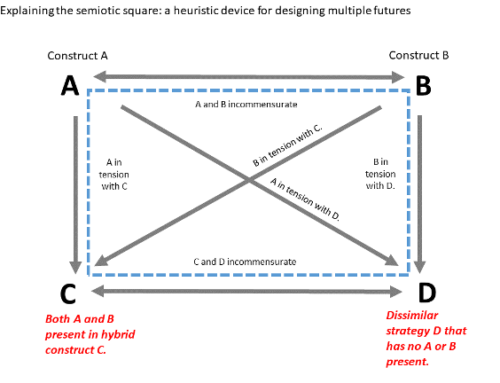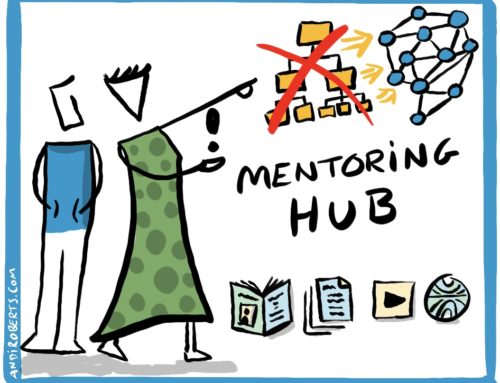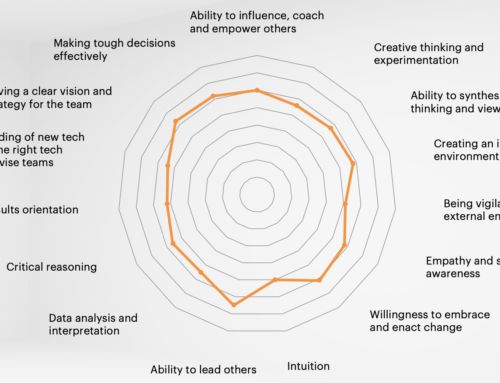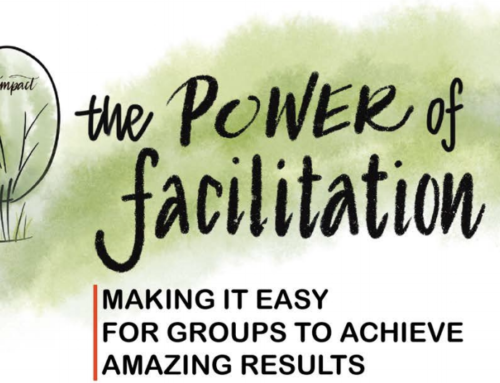This web page has been designed to hold all of the links and resources from earlier posts around graphic facilitation.
If you have any resources you think I should add, please do reach out via a post below or a message via twitter / facebook or LinkedIn. You can also email me!
The resources on this page are in no particular order, so do not think higher up a page is better. Just like in the world of investing DYOR or Do Your Own Research!
This is a short list of graphic facilitation books that I consider essential reading on the topic. I personally own all of these and more!
- David Sibbett: Graphic Facilitation > One of the founders of this domain and a solid starting location. His other books are great, but follow the same ideas and extend them. I have written a brief review of his book HERE.
- Brandy Agerbeck: The graphic facilitators guide and The idea shapers > Both great books, to build up skills on all facets of the work.
- Martin Haussmann: Uzmo, Bikablo 2.0, Bikablo emotions > a very specific and popular style of images / icons. Uzmo goes way beyond the excelent iconography of the other books. A great read!
- Anthology of authors – “Drawn together through visual practice” > A good overview of different uses, practices and ideas for graphic facilitation.
- Kelvy Bird: Generative Scribing – A Social Art of the 21st Century > Kelvy’s book really gets to the heart of scribing for visual facilitation – very solid.
- Anna Lena Schiller: Graphic Recording: Live Illustrations for Meetings, Conferences and Workshops > Expensive BUT a great reference for inspiration and styles. I personally held off buying, but glad I did in the end. Thanks to Fran O’Hara for prodding me to get it.
- Ben Crothers: Presto Sketching – A great book that goes from basics through to advanced use of visuals for communication
- “The visual facilitation guide” edited by Rachel Smith, Tim Hamons and Jeroen Blijsie. This book includes a mass of chapters from a range of global practitioners and is very inspiring.
- “Draw to learn” by Nanna Frank and Anne Madsen is an excellent free ebook on the use of visuals in education and covers the basics of graphic facilitation.
Booked related to graphic facilitation I.e. visual thinking….
- Gary Austin recommended “Visual Thinking Book” by Willemien Brand. I have this book, as of EUViz2018, and I really like it. Very simple and clear with great ideas. UPDATE: Willemien has also created three new books. One is “Visual Doing” and is very, very good and a couple of workbooks for the two books already created. These are good if you have a low to average level of visual competence.
- Coullomb & Collingwood-Boots: Collaboration by design. Not a graphic facilitation book as such BUT it really connects to the planning and delivery of facilitation with a very visual perspective. Purchased at EUViz2018.
- Cara Holland: “Draw a better business”- not a book on pure graphic facilitation, but more of a visual thinking applied to business situations. Purchased September 2018.
- Darragh Power suggested via LinkedIn that I add on a few books here: A) Dan Roam’s “back of the napkin” books. They are a solid introduction to visual thinking processes. Personally I like the larger “unfolding the napkin” book. B) Rapid Viz: A New Method for the Rapid Visualization of Ideas by Kurt Hanks which I also have and is a great introduction to fast sketching and visualising and C) Drawing Ideas: A Hand-Drawn Approach for Better Design by Mark Baskinger. I have not read this yet, but added to my to buy list
- Sue Johnston recommended “Pencil me in” by Christina Wodtke.
- Axelle Vanquaillie has written “Start to draw – Visual Communication in the workplace”. I have not read this yet.
Online Resources:
Graphic Express is a good .pdf guide that shows how Visual Facilitation can be used in Youth Work: HERE
The Visual Facilitation Cookbook by Torben Grocholl, Deniss Jershov and Kati Orav is a resource worth downloading. You can access the .PDF HERE.
Are the any other Graphic Facilitation Books that you would recommend? If so, please leave a comment below.
Face to face paid courses
The Grove are pioneers in visual practice. They have a range of courses, and whilst US centric, they do venture further afield to deliver courses. THIS is the link to their international workshops.
Bikablo run courses internationally. I personally have all of their books and really like their style. (Thanks Gill Greenbaum for the suggestion).
Kelvy Bird runs courses regularly internationally on ‘Generative scribing”.
Sam Bradd, based in Canada runs courses regularly.
DPict offer a range of courses in the USA.
Michelle Laurie, based in Rossland, British Columbia, Canada runs open programmes.
Inky Thinking based in the UK do regular one day introductory days into visual thinking.
Online paid courses:
Brandy Agerbeck offers online and face to face courses. I have read her books and watched many of her videos.I have competed her online course “the Agerbeck Method” and it was very useful. You can see my outputs from the classes HERE. Since I initially set up this post, she has developed several other courses. Head to her site to find out more.
Christina Merkley also offers a range of online and face to face courses.
Drawing for meetings, presentations and trainings. A 4.5 hour UDEMY course. I have not tried it, but the feedback looks good. Price was $9.99 when I looked (8th June 2018).
Let’s Letter Together: A series of different courses by Heather Martinez on lettering. I have taken several of these: Free Neuland course, Lettering with the masters and How to write like an architect, and have found them very solid. She also runs face to face courses on lettering. I personally took her 2 day course and have found it very helpful.
Doodle Institute: Diane Bleck has a range of online courses, from initiation in visual practice through to running a successful business.
Graphic Change: Cara Holland offers a range of online courses.
Verbal to visual: Doug Neill offers a range of online courses.
Michelle Walker offers an online course of 12 modules with an 80+ page handbook.
Benjamin Felis offers an online course.
Mireille van Bremen offers an online course.
Yuri Malishenko has a course on Udemy
Online free resources
Introduction to visual language is part four of a broader storytelling course available for free on Khan Academy. Thanks Mireille for sharing!
Sylvia Duckworth has created this great sketchnoting resource: HERE
In order to add resources here I want to add providers that have on demand courses (paid or free) OR organisations that organise at least 4 courses a year as open programmes.
Kim van den Berg has a great mini ebook / course HERE
Articles on Medium
- 10 Techniques to up your sketching skills HERE
- A few nice articles from Ralph Ammer on Medium: Six starter exercises HERE . Follow on drawing exercises HERE.
- THIS article is a great read on combining seeing with sketching. Found thanks to Colin Horner!
Youtube channels
I subscribe to the following
- Shoo Rayner HERE.
- Christopher Hart HERE.
- Cartoon Smart HERE.
- Diane Bleck HERE.
- Doodle Draw Art HERE.
- Sketch with Tech HERE
- Pablo Stanley HERE.
- John Montgomery HERE.
- Ashton Rodenhiser HERE
- Benjamin Felis HERE
THIS is not a channel, but worth watching
Webinars / Hangouts
Mark Monlux hosts a monthly hangout called Epic Sketchtime. Sign up for details HERE. (needs a google account),
Makayla Lewis organises a monthly sketch note hangout. Further details can be found HERE.
Additional Resources
Un Picto Pour Jour is a French resources with a whole series of visual tutorials. You don’t need to be able to speak or read French to follow most of them.
Jodie Gearing provides some interesting exercises HERE.
Sylvia Duckworth has created this great sketchnoting resource: HERE
Holger Nils Pohl has put together a simple course on creating digital sketches: HERE
Skillshare has a range of courses that help you learn to draw and Alex Glod has developed one entitled “Drawing for Meetings, Presentations and Trainings”. You can find it HERE.
Yuri Malishenko has posted some videos of how to draw simple visuals.
Studio Limon Illustrations has illustrations for a range of topics under the #waystodraw hashtag
Books
This is a tricky one as style is a very personal thing.
The Bikablo books are a great starting point, but expensive.
I would definitely recommend Ben Crothers “Draw in 4” book.
These are tips I have picked up from the Graphic Facilitation group on Facebook about how to build scribing competence:
1) Practice:
Real time practice: Scribe meetings, conversations, interviews, videos such as TED & PBS.
Not real time practice: Scribe book, article, journal, blog piece summaries.
Aim for live size capture when possible i.e. big rather than Sketch note / flipchart.
Review work afterwords – mark up good work, not so good work and think about what went well and what did not go so well and what you can change.
2) Refine:
Lettering, images, placement, supporting structures (arrows, frames) etc by just practicing these areas.
3) Build and practice personal image bank
Develop core concepts that you think you will use.
Use other facilitators work for inspiration (but not copy).
Use published materials i.e. Bikablo.
Consider an index or similar (physical or similar).
Create consistency in style /image use (to build “memory muscle”).
4) Watch
Observe other scribes at work at live events.
Watch videos (youtube etc) of other scribes working.
Review their work: what you like / don’t like, what you notice about their layout, work flow etc.
View other scribe outputs to get sense of space, flow, colours, icon use, clarity etc
5) Get feedback
Ask other scribes and non scribes for feedback on your work
Reflect on feedback and apply to following work / practice
6) Read
Read books related to the area of scribing: facilitation, visual thinking, information visualisation etc
Reflect on what you read: what did you learn? How can you apply?
I will build up the tab as I see more things pop up AND I will add my own questions and resources. These are gleanings from others and my own research so do please sense check the answers! THANKS to all those that posted questions and provided answers!
Technology
What iPad apps allow me to zoom in and still keep the full screen visible for participants? Procreate (canvas airplay toggle) & Workvisual both do this. Possibly also LInea.
Which iPAD apps allow large canvas sizes i.e. 3m x 1.5m? Vector based apps, so ones like: Photoshop, Adobe Draw, Graphic, Concepts
How do you archive sketches digitally? Tag in Aperture, Archive on Flickr, Pixave app, Carbonite/Google Drive/Dropbox, Google photos, Behance.net
What apps are there to track time on projects? Harvest, Office Time, Hours Trackers Pro, Toggl
How can I project to my iPad? Connect the iPad to a projector with a VGS or HDMI dongle OR Set up a localwifi with an Apple TV and connect that, via HDMI to the projector (this allows hand free experience).
How can I check if a chart I wish to photograph will come out good, as some areas seem whiter than others? Brian Tarallo sugested the Green Screener app
How can I scribe digitally over a webinar platform? On an iPad Zoom allows you to share apps you have on your device, so you can share your favourite visual app.
How can I scribe analogically over a webinar platform?
Yuri Malishenko has done a great write of his experience HERE.
Where can I buy foam board?
You can probably buy it at large art stores or sign material stores BUT it is not particularly environment friendly. Try other products that are 100% recyclable like Falcon Board or Eaglecell.
How can I create fonts of my own handwriting?
Online: Calligraphr , Windows: Fontcreator , iPad: iFontMaker , Adobe CC platform: Fontself
Visuals practice
I recently saw this video by Benjamin Felis and thought it was worth adding here. A treasure trove of advice:
What are websites for inspiration on specific graphics? https://thenounproject.com, google image search, bing image search.
I want to improve my lettering, recommendations on low cost courses?
Heather Martinez has paid for courses at at www.LetsLetterTogether.com. Free resources can be found at https://www.facebook.com/CorporateGraffitiArtist
Materials
How can I write on glass? Try crayola erasable crayons, window markers, acrylic paint, POSCA pens, Sticky vinyl and remove what you do not need. Someone also suggested ensuring you have a solid colour behind the glass, so the drawing is visible.
Where can I find dotted flip charts / note pads for lettering / visual practice? Neuland.com sell these
I need some graphic walls / pin boards for my event? Reach out to your nearest Neuland.com partner. They often hire then out per day.
How can I add large swathes of colour to visuals? Stokmar wax blocks or pastels. Oil pastels are better than chalk ones (pan pastels seems to be popular – apply with a makeup sponge)
How can I get a clear digital image of the graphic when done? Many commercial printers have scanners, as some plotters have scan head attachments. Take some high quality images: This video by Sam Bradd explains how he works HERE (Vimeo video). Michelle Walker shares her process HERE (YouTube Video).The CamScan app for phones also does a pretty reasonable job if the lighting is consistent. See also my post on ScanScribe. What do you do to recover a spelling mistake?
Common solutions include: sticky mailing labels to cover, white artists tape of correcting fluid type pens. You can also draw attention to it using humour.
How do you stop Neuland Ink bottles from leaking? 1) Ensure you travel with the original black caps on. 2) Consider using teflon tape. Place around the threads of the bottle as this creates a better seal. 3) Place in ziplock bags with paper in-between bottles. 4) Consider using other containers i.e. 30ml eye dropper bottles.
Business
I am unsure about the legal side of my work such as copyright and contracts. Any suggestions?
Always aim to hire a professional for initial core documents. Mark Monlux has done a great video series on law and visuals. Whilst this is US centric, the principles are solid. visit HERE.
Do people have insurance? Lots of people do and many clients require it (me included as a practitioner)
Do you have tips for marketing my business? Look for a local chapter of CREATIVE MORNINGS and create visuals for free. Find a TV or radio station and negotiate to become the official visual recorder
How do I find a visual practitioner near “X”? First do a local search using keywords: visual scribe, visual facilitator, visual meetings etc. Consider using the IFVP map. Head over the the FB page and ask. Also check out instagram and twitter and do local search / keywords. THIS spreadsheet has people living and working in Africa.
Research
I am looking for academic articles on the use of visual practice, ROI etc. Are there any? Yes, Philip Bakelaar has shared his repository as a .pdf HERE. Roy Blumenthal has shared resources HERE.
Do you have answers to any questions? If so, please add below!
If you would like to share this post easily, use the following URL: bit.ly/GFfaqs
Thanks for reading, Andi
General Websites:
Sketchnote Army – The hub of all things Sketchnoting – regular examples and articles and blogs pieces on techniques and ideas.
Kathy Schrock’s guide to sketchnotes – An amazing set of links to sketch noting in Education BUT is worth a read for anyone and everyone!
Learning to Sketchnote
Sacha Chua has put a set of lessons on her blog. I really enjoy her blog and she has been very generous to the visual community.
A really recommend that you take Diane Bleck‘s courses. The free ones are worthwhile and provide a solid base. Some of her course are free occasionally and so worth keeping an eye on. She is a very active social media user and has authored some books on the topic.
Adam Sicinski of IQDoodle also has a free course that is worth taking.
SketchingforUX has a great newsletter and resources for creating your own visual library.
Several courses can be found on websites like SkillShare and Lynda.com.
Books
The most well known are those by Mike Rohde: Sketchnote handbook and Sketchnote Workbook.
Brandy Agerbeck’s latest book, The Idea Shapers is worth reading also.
The Bikablo series of books are very good to help create a visual library. They can be found at Neuland websites. These are expensive, but very good.
Social Media
Pinterest and Instagram are very popular with Sketchnoters. The links are to my accounts. On these sites also look up “Bikablo” & “sketchnotes”
This is my Twitter list of the people I consider the leading visual practitioners.
Events
There are regular events to practice Sketchnotes. SketchnoteLDN is the regular London meetup. There are also European meet ups, which can be seen HERE.
My sketchnotes
When I started learning, mid 2016, I did a series (100 images) of small sketchnotes on personal development. They can be found on Twitter or Facebook.
I have also started to summarise research papers in the areas of business and leadership. The can be found on Twitter or Facebook.
This page has a list of some of the communities available for visual practitioners to share and learn together:
LinkedIn groups – Generally pretty quiet!
Graphic Facilitation group with 2,400 or so members
Visual Thinking group with 14,000 plus members
Viz Think group with just over 5000 members
Graphic Facilitation China with just over 100 members
Facebook – Generally more active
Global groups
Graphic Facilitation group with 13,500 members – The most active I know of!
European Visual Practitioners group with just under 1000 members
Seasoned Practitioners in Visual Facilitation with nearly 600 members
Regional groups:
UK Visual Practitioners group with just over 100 members
Graphic Facilitation Egypt with 150 or so members
Graphic Facilitation Vietnam with just over 100 members
Graphic Recording & Facilitation Austria with nearly 70 members
Graphic Facilitation Sweden with just over 30 members
Vancouver area scribes and visual facilitators with close to 130 members
India PAGE and GROUP for Graphic Facilitation
Barcelona Graphic Facilitation group – Spanish language! Small group of 10 so far
Graphic Facilitation in Spain – Spanish Language! Close to 250 people and includes people from LatAm countries
Graphic Facilitation in Latin American countries – Nearly 2000 strong and Spanish language.
MeWe
Graphic Facilitation – A new forum for practitioners set up in December 2019.
IFVP – International Forum of Visual Practitioners
The IFVP is the global association (with paid membership) and has forums for its members. Unsure how many members it has nor how active they are.
[Group Numbers as of August 2019]
This tab will have resources on doing visual work remotely:
Yuri Malishenko on his learning’s from remote visual training via Zoom HERE.
IFVP Visual Recording in the age of digital series HERE. A series of videos by leading practitioners. A goldmine of information.
I am really keen to expand this, so if you have feedback or resources around visual / graphic facilitation, please let me know. THANKS, Andi






Leave A Comment